The BMW i3 nameplate would normally relate to the electric hatchback, until recently. Now, BMW has given a new meaning to the i3. The brand concluded production of the hatch in summer of 2022, and reintroduced the i3 as an all-electric sedan, exclusive to China, where the 3 Series regularly tops the premium-compact segment.
Interestingly, the BMW i4 was also new to the market, and having experienced both vehicles first-hand, here are the differences I found during my time with the electric sedans.
Design
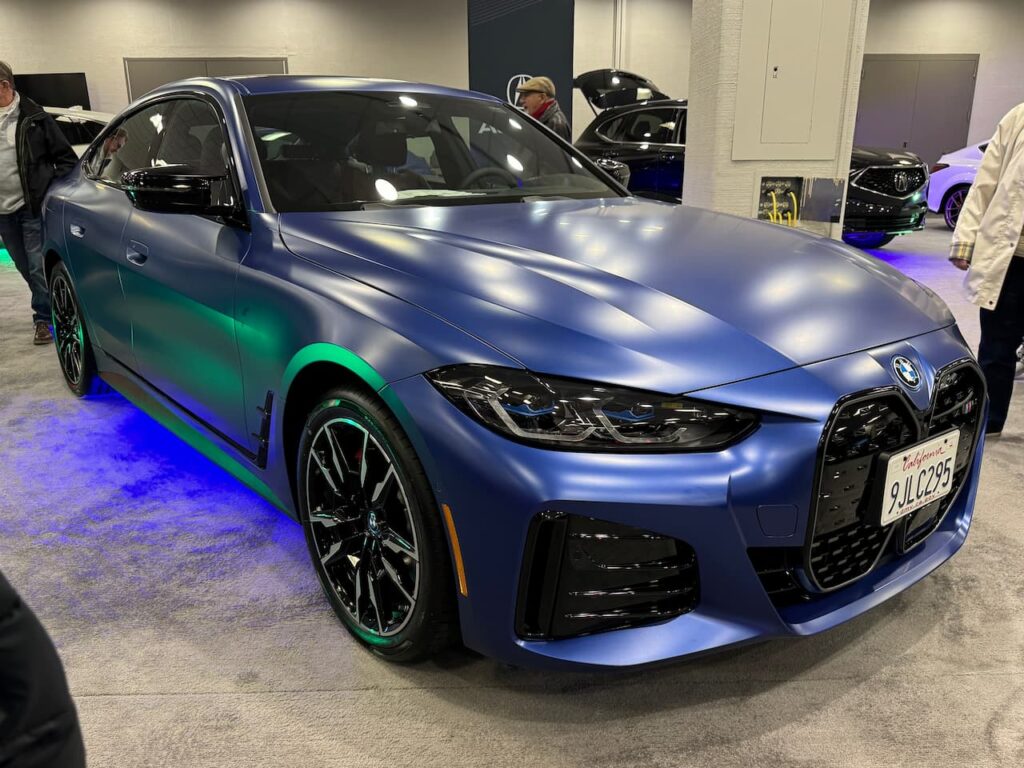
There are two configurations on offer, the BMW i3 eDrive35L, and the BMW i3 eDrive40L, the last letter referring to the 10 cm longer length it has over the regular 3 Series sedan. The variant discussed in this article is the BMW i3 eDrive35L.
BMW seems to have standardized the design recipe for its electric models. Like the iX1 and iX3, the BMW i3 sedan also gets a closed-off kidney grille with a gloss back finish. Its overall design is based on the G20 3 Series design. The i4 differentiates itself with its massive grille which stretches all the way down to the lower air intake and is more than double in size.
Both EVs have aerodynamic wheels. The BMW i3 sedan comes with 19-inch wheels while the BMW i4 offers 18- and 19-inch wheel options on the i4 eDrive40 in the United States. What’s more, the i3 measures longer (191.8 inches) than the i4 (188.5 inches). The i3 also has a longer wheelbase (116.7 inches) than that of the i4 (112.4 inches).
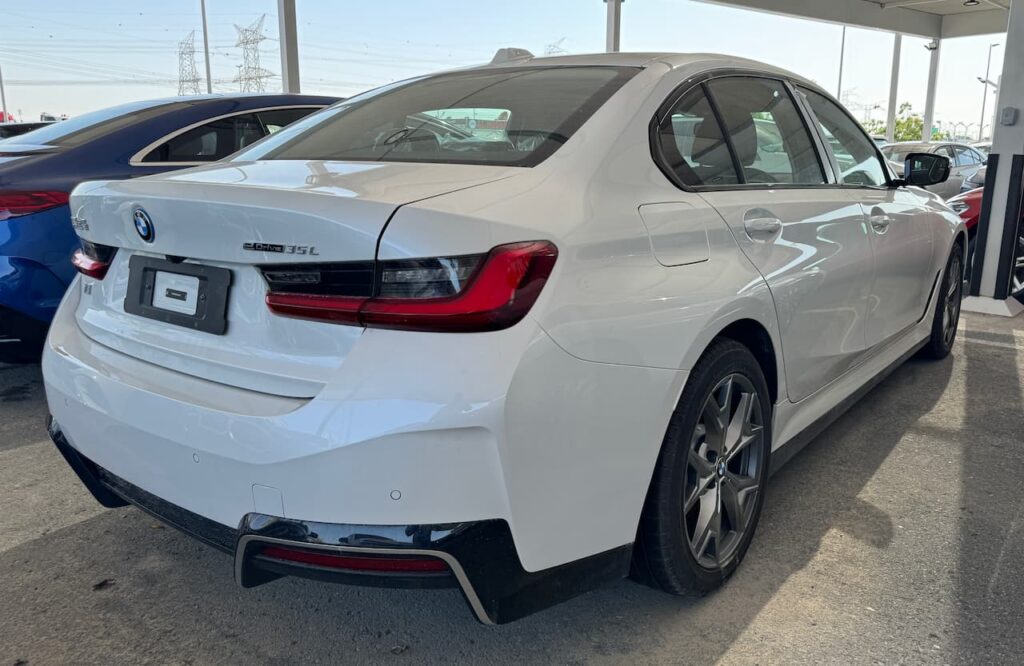
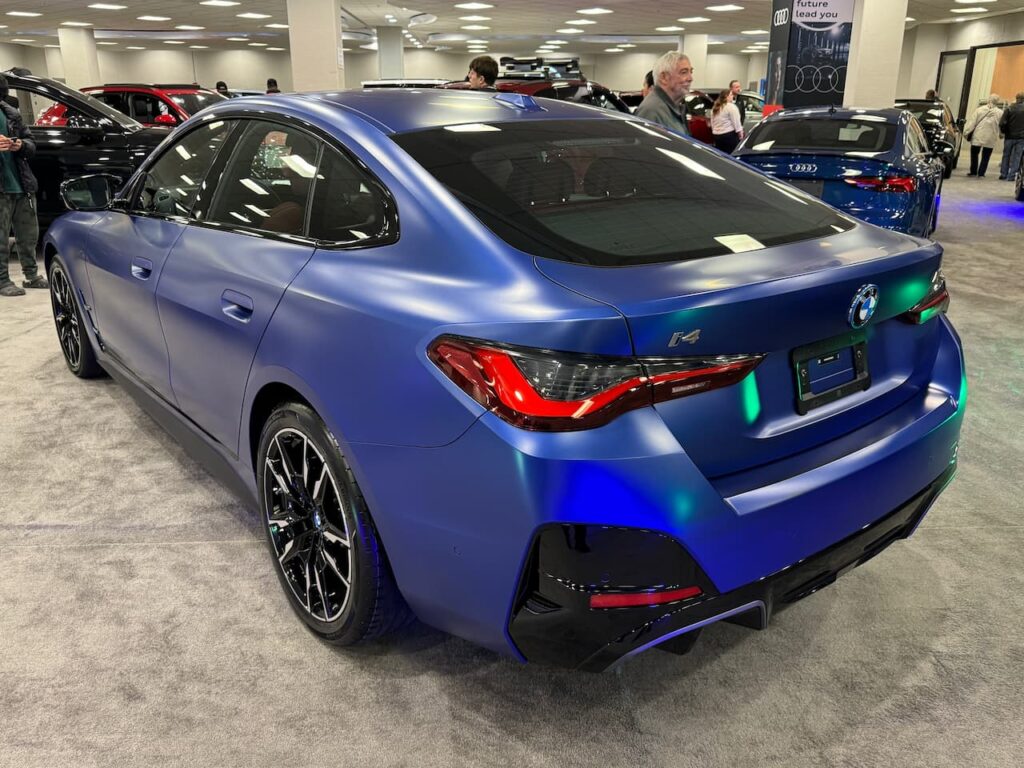
At the rear, the BMW i3 sedan gets the same LED taillamps as the 3 Series. That said, both the i3 and the i4 get an aggressively styled rear bumper, which has been optimised for aero-efficiency.
Interior & Features
The interior of the BMW i3 sedan is a big departure from what is offered on the 3 Series. In fact, it’s more in line with the i4, although with distinct center console and door trim designs. The digital real estate is identical on the two sedan siblings. The i3 and the i4 both use the curved display panel with a 14.9-inch central touchscreen infotainment and a 12.3-inch digital cockpit.
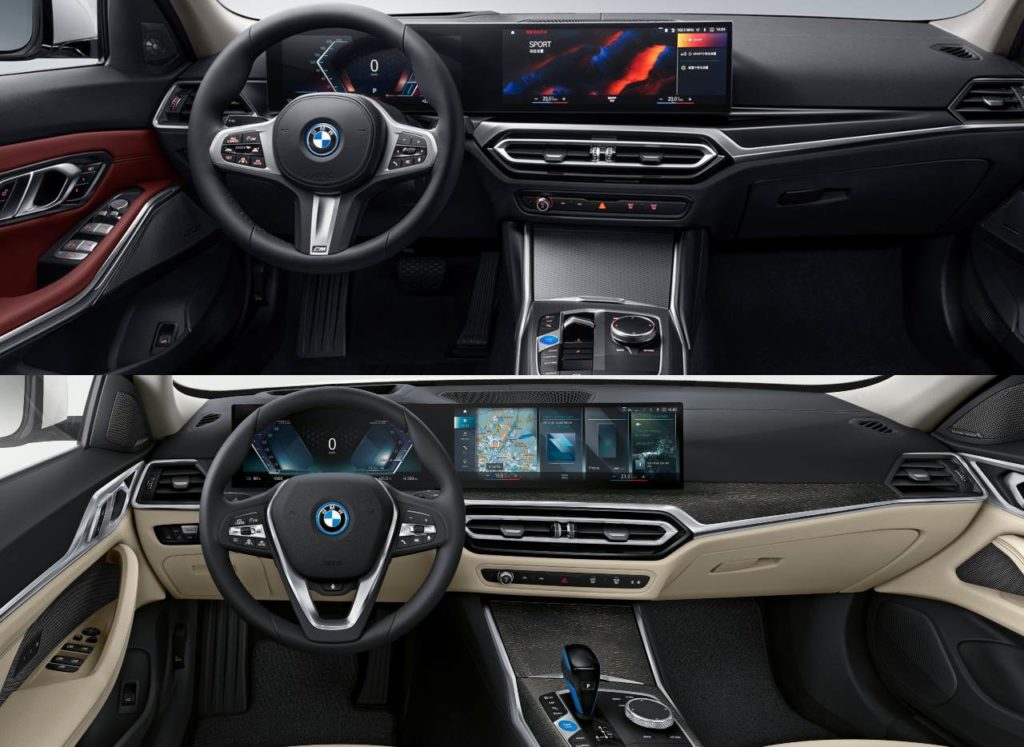
However, the center console is unique. The BMW i3 sedan has the gear selector stalk behind the steering wheel while the i4 has a proper gear lever. That said, both sedans get the same physical buttons for climate control and drive modes among other functions. What’s interesting is that the i3 gets the M steering wheel (or a unit that is closely matched) which is also present on the i4 M50.
Both sedans were launched with the BMW iDrive 8 software, and the i4 recently switched to 8.5 which is easier and more intuitive to operate compared to the older generation OS. The i3’s system is compatible with platforms like WeChat, Tencent Small Scene 2.0 and QQ Music which are popular in China. It also supports Apple CarPlay.
Specifications
The BMW i3 eDrive35L is powered by a single rear-axle-mounted electric motor which produces 282 hp and 295 lb-ft of torque. It gets a 66.1 kWh battery which delivers a CLTC certified range of 327 miles. The BMW i4 eDrive40 on the other hand makes 335 hp and 317 lb-ft. It comes with a larger 81.5 kWh battery which provides 301 miles of range on the EPA cycle.
With the addition of the i3 eDrive40L, the clear performance advantage that the i4 single-motor enjoyed, was short-lived. However, the dual-motor eDrive40 variant is still the performance king in the comparison of the two sedans.
| Specs | BMW i3 eDrive35L | BMW i3 eDrive40L | BMW i4 eDrive40 | BMW i4 M50 |
| Length | 191.8 inches | 191.8 inches | 188.3 inches | 188.3 inches |
| Width (without mirrors) | 72.6 inches | 72.6 inches | 72.9 inches | 72.9 inches |
| Height | 58.3 inches | 58.3 inches | 57.2 inches | 57.2 inches |
| Wheelbase | 116.7 inches | 116.7 inches | 112.4 inches | 112.4 inches |
| Motor | Single (RWD) | Single (RWD) | Single (RWD) | Dual (AWD) |
| Power | 282 hp | 335 hp | 335 hp | 536 hp |
| Torque | 295 lb-ft | 317 lb-ft | 317 lb-ft | 586 lb-ft |
| Battery (net capacity) | 66.1 kWh | ~80 kWh | 81.5 kWh | 81.5 kWh |
| Range (CLTC) | 327 miles | 368 miles | 388 miles | 348 miles |
| 0-62 mph | 6.2 seconds | 5.6 seconds | 5.7 seconds | 3.9 seconds |
| Top Speed | 112 mph | 112 mph | 113 mph | 135 mph |
First-ever 3 Series to feature air suspension
A novelty on the BMW i3 sedan is adaptive air suspension on the rear axle. This marked a watershed moment in the 3 Series’ 47 year history, as it’s the first time that customers get air suspension on a 3er, that too as a standard feature. The model in question, however, is China-spec and it’s unlikely that the international version would inherit this featuring during the current lifecycle or in the future generation.
The front and rear suspension uses hydraulic rebound damping technology and together with the adaptive rear suspension, the ride quality over bumpy roads is reportedly more stable. The BMW i3 sedan also sits 1.73 inches (44 mm) lower than the gasoline-powered 3 Series. The company has mentioned that the BMW Brilliance Automotive Ltd. R&D division has adapted the componentry and fined tuned the suspension to suit the local market. The BMW i4 gets a similar set-up with adaptive rear-axle air suspension in the global market.
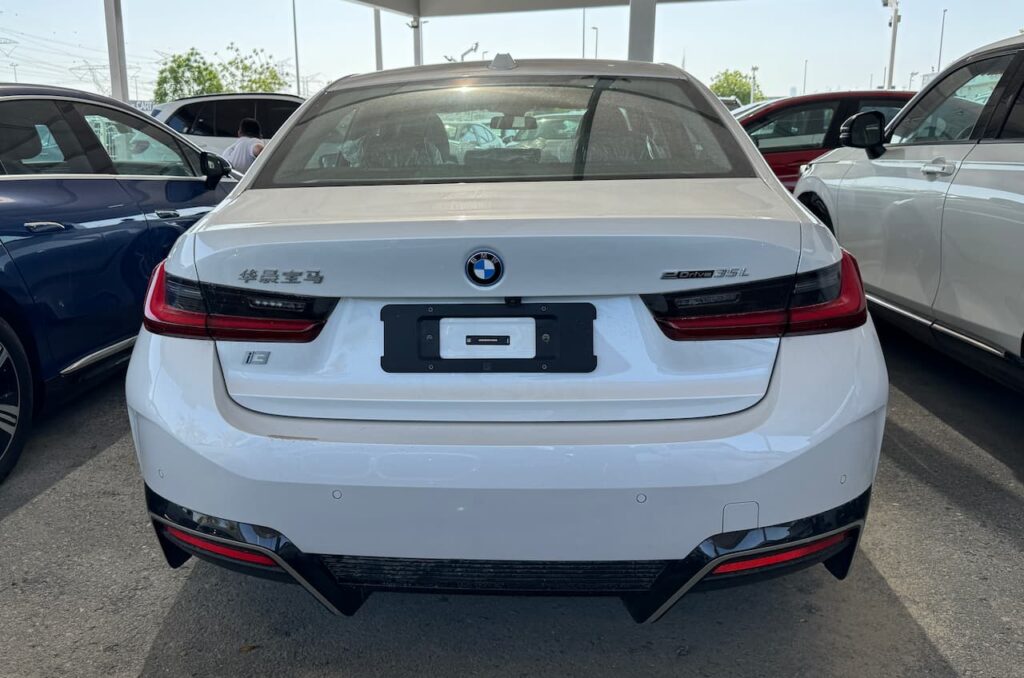
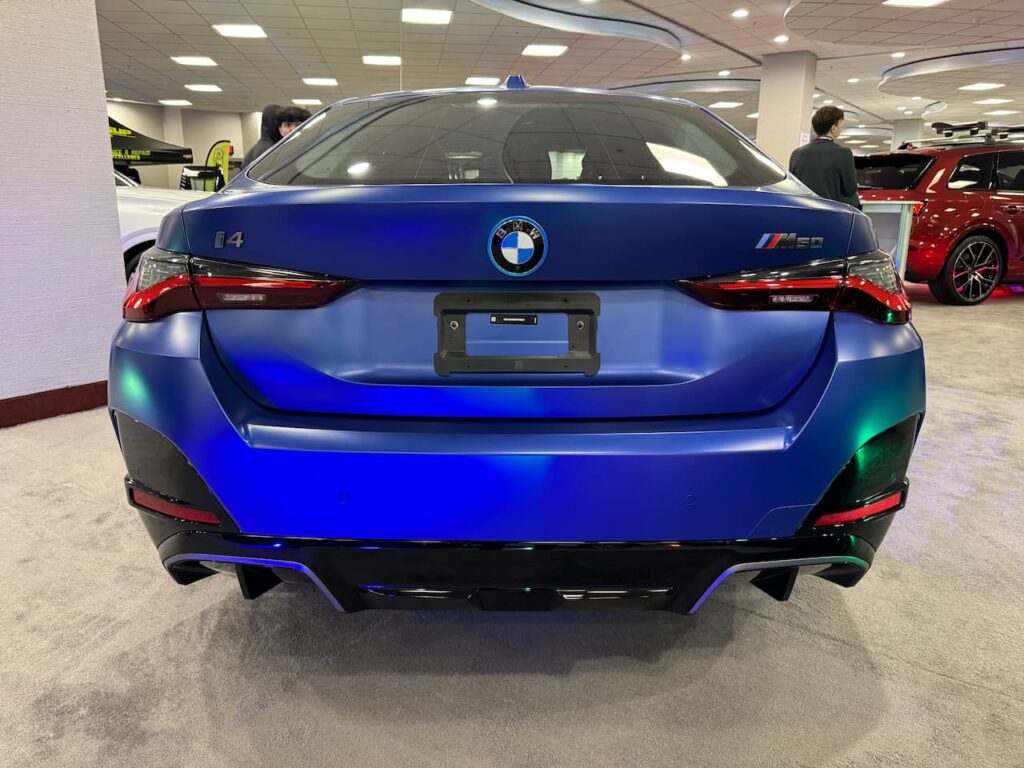
Price & Manufacturing
The BMW i3 eDrive35L is priced at CNY 359,900 (USD 49,811) and was launched in the Chinese market in May 2022. The i4 is priced more in the local market, starting at CNY 429,900 (USD 59,499). It’s unlikely that BMW will offer an i3 sedan in international markets until the arrival of the 2026 BMW 3 Series, riding on the BMW Neue Klasse Platform.
The i3 sedan is manufactured at BMW Group’s highest-volume manufacturing facility in China. The electric 3 series is made at BMW Brilliance Automotive Ltd’s Plant Lydia. Lydia is a district of the Shenyang city. The BMW i4 on the other hand is manufactured at the brand’s 100-year-old Plant Munich in Germany, since October 2021.
Final Thoughts
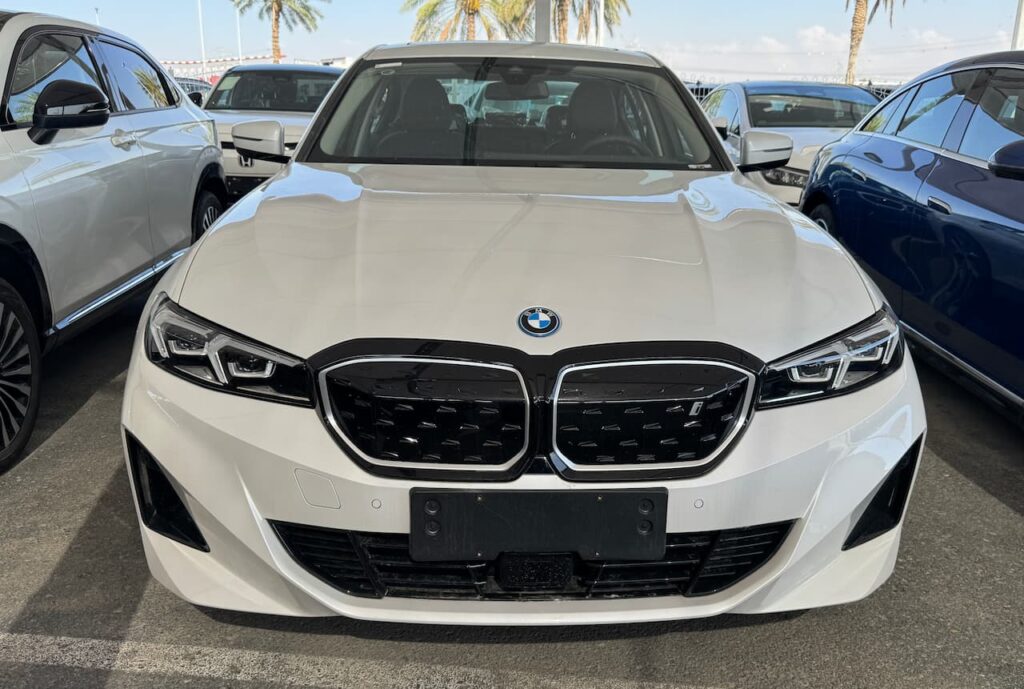
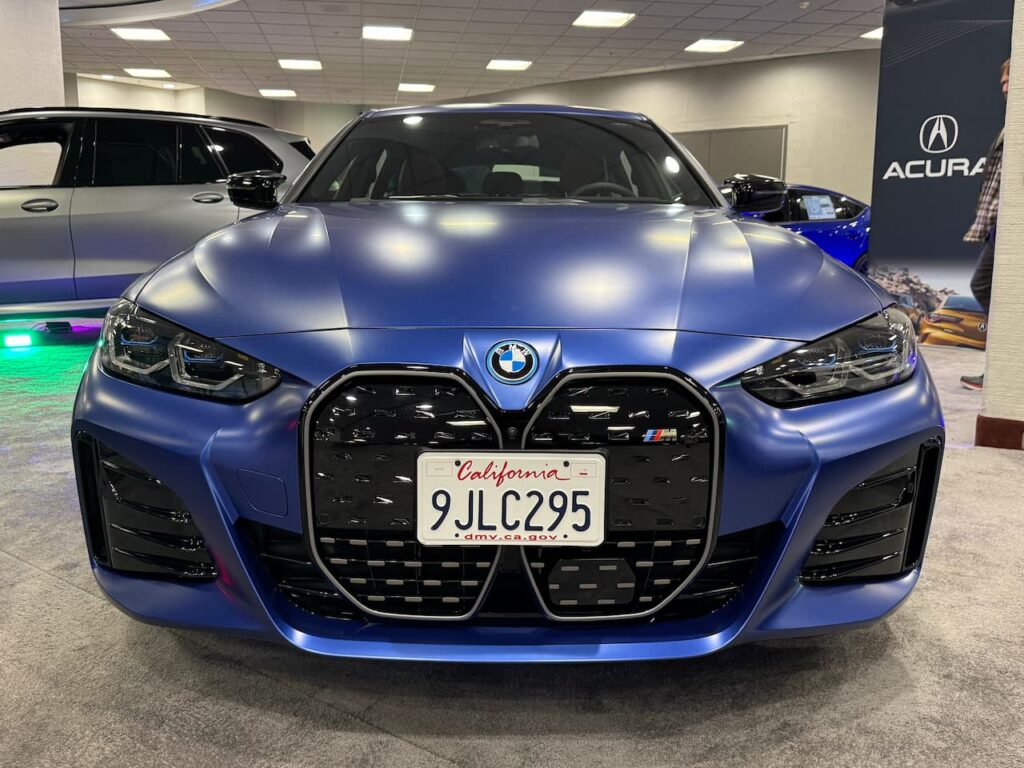
After spending a fair amount of time around both German electric sedans, I find myself taking the i4 for its coupe-styled rear, and the more aggressive styling. Indeed, the i3 is more practical in terms of interior space, larger windows, and a more comfortable rear seat. However, since my primary use would be for self-driving and I would opt for the dual-motor M50 variant if given a choice, the i4 is the one I would select between the two.

An automobile engineer by training, I’ve analyzed the global car market since 2005, with a keen focus on EVs since 2008. My journey in online automotive publishing spans 16 years, during which I have reviewed cutting-edge automotive technologies and interviewed leading CEOs and vehicle developers from around the world.









